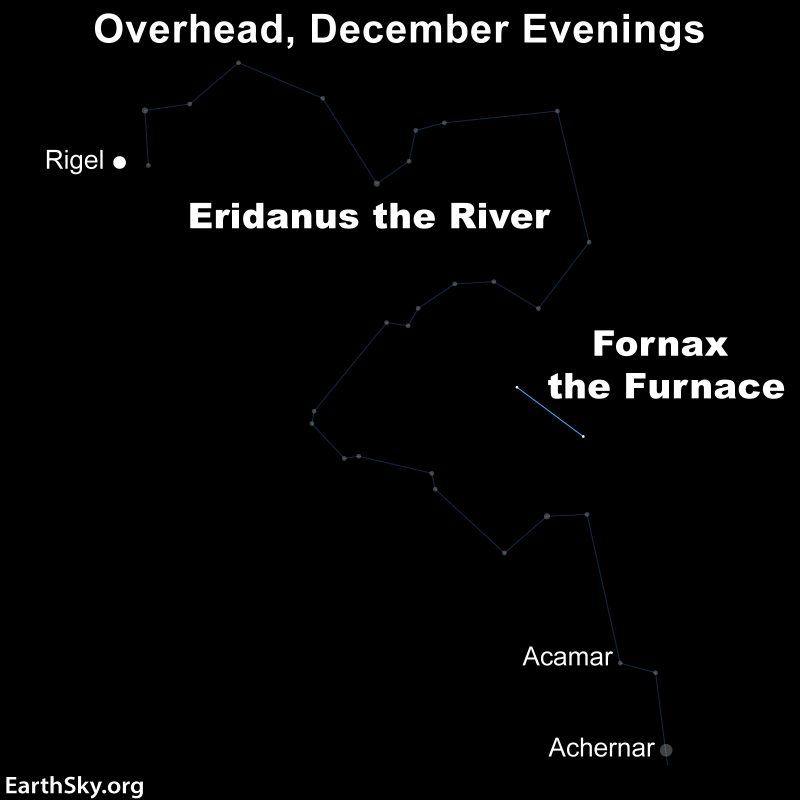
Fornax the Furnace lies high in the Southern Hemisphere sky on December evenings. Tucked in a bend of Eridanus the River, Fornax is one of 14 constellations that Nicolas Louis de Lacaille named in the mid-1700s. None of the stars in Fornax is particularly bright, but the constellation does hold some wonderful gems in its darker depths: at least six star systems with exoplanets, the Fornax Dwarf galaxy (a satellite galaxy of the Milky Way), the Fornax Cluster of galaxies, a cosmic filament showing the largest rotation in the universe and the amazing Hubble Ultra Deep Field image.
The 2022 lunar calendars are here. Order yours before they’re gone!
Fornax the Furnace and its stars
Deep in the Southern Hemisphere, Fornax the Furnace is a devilish constellation to find because of its dim stars. Its brightest star, Alpha Fornacis, is only magnitude 3.9. This star lies about 46 light-years from Earth. The second brightest star, Beta Fornacis, at magnitude 4.4, lies 168 light-years away. Sometimes people point to a third star of Fornax in order to trace out a flattened triangle in this region of space. The third brightest star is Nu Fornacis at magnitude 4.6 and 357 light-years away.
Scientists have found six star systems in Fornax to be harboring planets. One of the stars, HR 858 at magnitude 6.3, is just barely visible to the unaided eye for those with good eyesight. The Transiting Exoplanet Survey SatelliteTESS found at least three exoplanets orbiting this star in 2019.
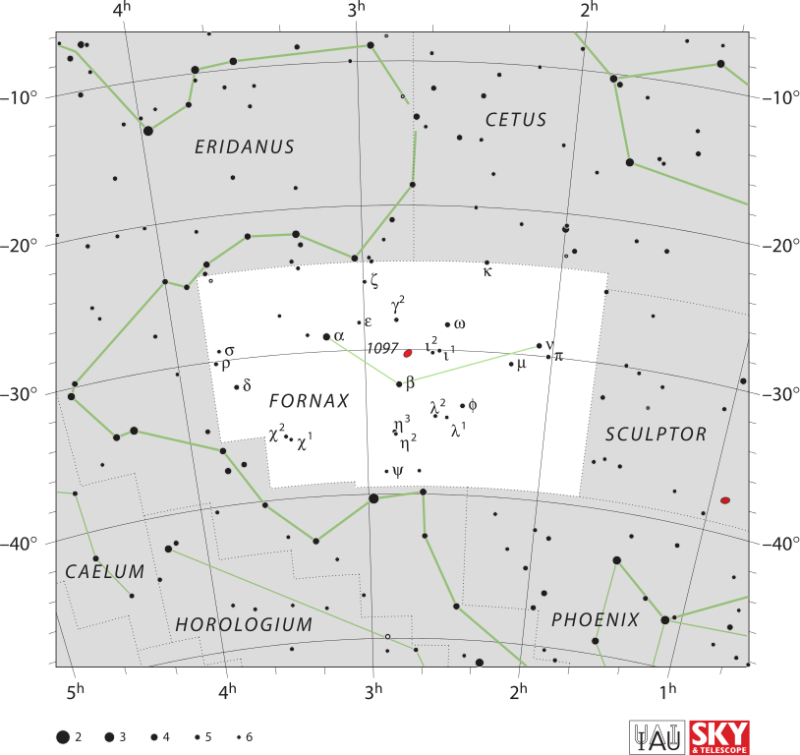
Fornax Dwarf, the satellite galaxy
One of the satellite galaxies of the Milky Way lies in the direction of Fornax the Furnace. The Fornax Dwarf is an elliptical collection of stars with six notable globular clusters. One of its globular clusters, NGC 1049, was discovered by John Herschel on October 19, 1835, while the galaxy itself wasn’t discovered for more than 100 years later, by Harlow Shapley in 1938.

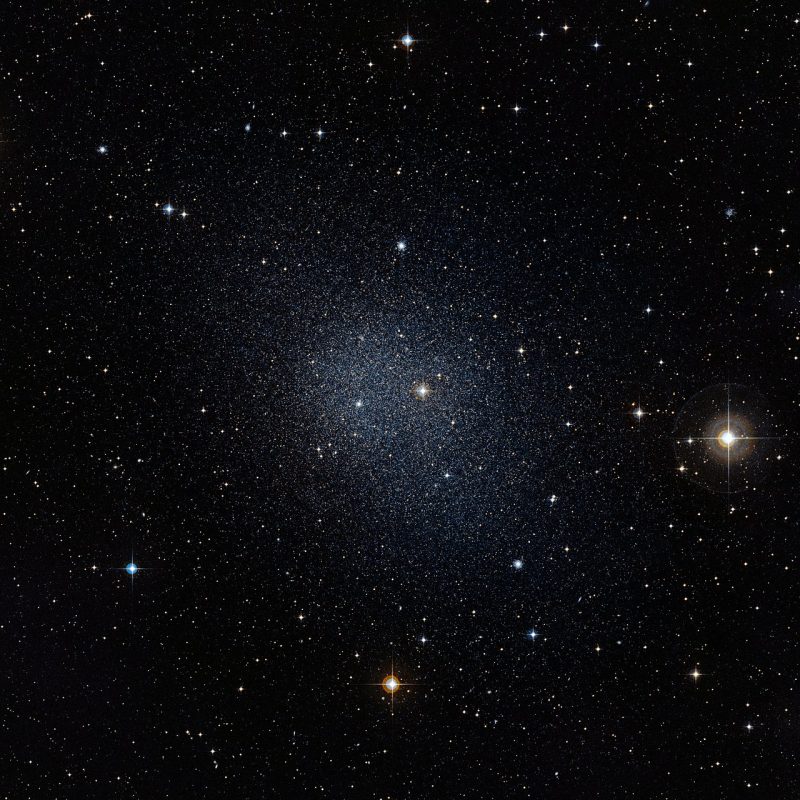
Galaxies clusters in Fornax the Furnace
One of the closest galaxy clusters to our Milky Way is the Fornax Cluster. It lies 62 million light-years away in the direction of Fornax and spills over into Eridanus the River. The brightest galaxy in the cluster, NGC 1316, shines at magnitude 8.5, meaning that you can pick it up with binoculars from under dark skies. NGC 1316, which also goes by the name Fornax A, is the fourth brightest radio source in the sky.
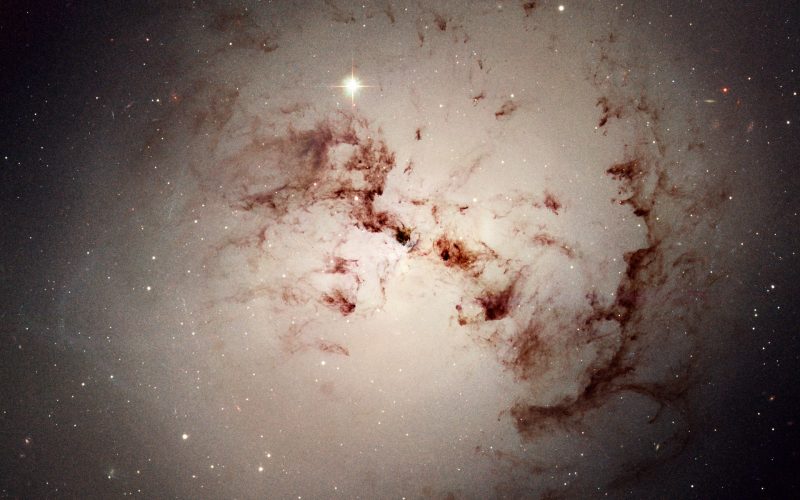

Hubble Ultra Deep Field
Because this is an “empty” region of sky, with few obstructions of a view into the wider universe, the Hubble Space Telescope aimed in the direction of Fornax to take an image of the early universe. The Hubble Ultra Deep Field captured an image of the universe packed with galaxies, looking back in space and time as far back as as 13 billion years ago.

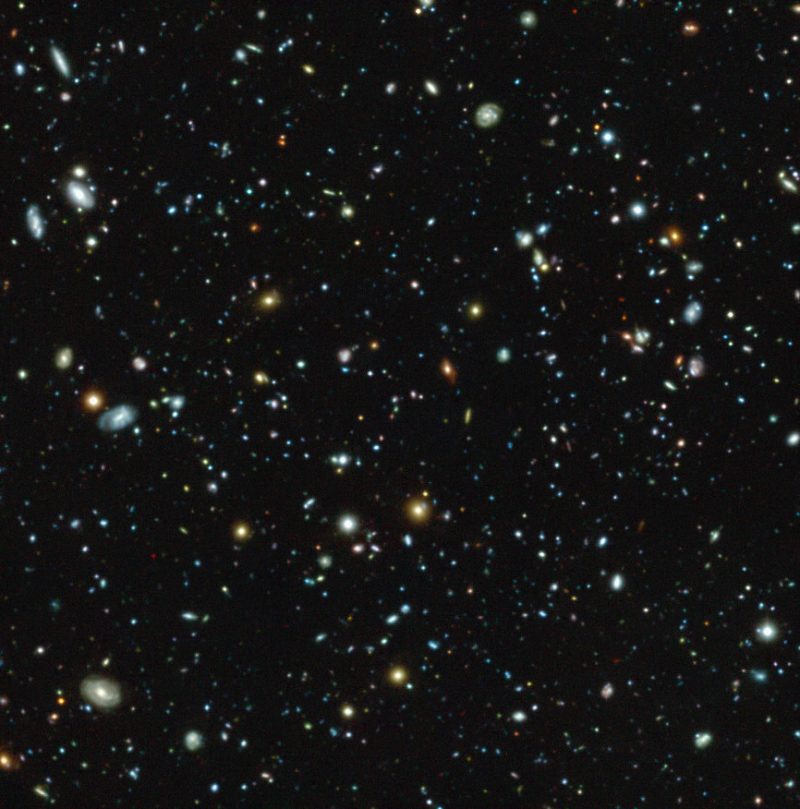
Largest rotation in the universe
The galaxies in our universe are strung together in long filaments and webs, creating the grand structure of the cosmos. Scientists have detected that one enormous filament of galaxies is rotating. These corkscrewing galaxies, located in the direction of Fornax, display the largest rotation in the universe.
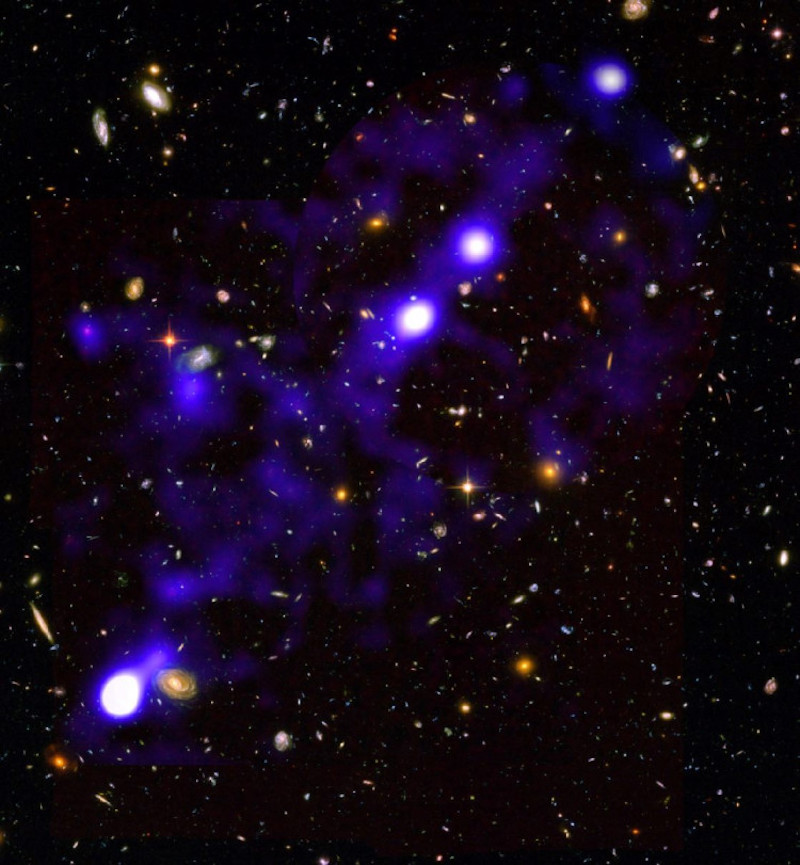
Bottom line: Fornax the Furnace is a constellation in the Southern Hemisphere that appears as a few dim stars to the unaided eye but is harboring galaxies, from one orbiting the Milky Way to some at the edge of the universe.
The post Fornax the Furnace and galaxies galore first appeared on EarthSky.
from EarthSky https://ift.tt/32alFzw

Fornax the Furnace lies high in the Southern Hemisphere sky on December evenings. Tucked in a bend of Eridanus the River, Fornax is one of 14 constellations that Nicolas Louis de Lacaille named in the mid-1700s. None of the stars in Fornax is particularly bright, but the constellation does hold some wonderful gems in its darker depths: at least six star systems with exoplanets, the Fornax Dwarf galaxy (a satellite galaxy of the Milky Way), the Fornax Cluster of galaxies, a cosmic filament showing the largest rotation in the universe and the amazing Hubble Ultra Deep Field image.
The 2022 lunar calendars are here. Order yours before they’re gone!
Fornax the Furnace and its stars
Deep in the Southern Hemisphere, Fornax the Furnace is a devilish constellation to find because of its dim stars. Its brightest star, Alpha Fornacis, is only magnitude 3.9. This star lies about 46 light-years from Earth. The second brightest star, Beta Fornacis, at magnitude 4.4, lies 168 light-years away. Sometimes people point to a third star of Fornax in order to trace out a flattened triangle in this region of space. The third brightest star is Nu Fornacis at magnitude 4.6 and 357 light-years away.
Scientists have found six star systems in Fornax to be harboring planets. One of the stars, HR 858 at magnitude 6.3, is just barely visible to the unaided eye for those with good eyesight. The Transiting Exoplanet Survey SatelliteTESS found at least three exoplanets orbiting this star in 2019.

Fornax Dwarf, the satellite galaxy
One of the satellite galaxies of the Milky Way lies in the direction of Fornax the Furnace. The Fornax Dwarf is an elliptical collection of stars with six notable globular clusters. One of its globular clusters, NGC 1049, was discovered by John Herschel on October 19, 1835, while the galaxy itself wasn’t discovered for more than 100 years later, by Harlow Shapley in 1938.


Galaxies clusters in Fornax the Furnace
One of the closest galaxy clusters to our Milky Way is the Fornax Cluster. It lies 62 million light-years away in the direction of Fornax and spills over into Eridanus the River. The brightest galaxy in the cluster, NGC 1316, shines at magnitude 8.5, meaning that you can pick it up with binoculars from under dark skies. NGC 1316, which also goes by the name Fornax A, is the fourth brightest radio source in the sky.


Hubble Ultra Deep Field
Because this is an “empty” region of sky, with few obstructions of a view into the wider universe, the Hubble Space Telescope aimed in the direction of Fornax to take an image of the early universe. The Hubble Ultra Deep Field captured an image of the universe packed with galaxies, looking back in space and time as far back as as 13 billion years ago.


Largest rotation in the universe
The galaxies in our universe are strung together in long filaments and webs, creating the grand structure of the cosmos. Scientists have detected that one enormous filament of galaxies is rotating. These corkscrewing galaxies, located in the direction of Fornax, display the largest rotation in the universe.

Bottom line: Fornax the Furnace is a constellation in the Southern Hemisphere that appears as a few dim stars to the unaided eye but is harboring galaxies, from one orbiting the Milky Way to some at the edge of the universe.
The post Fornax the Furnace and galaxies galore first appeared on EarthSky.
from EarthSky https://ift.tt/32alFzw

Aucun commentaire:
Enregistrer un commentaire